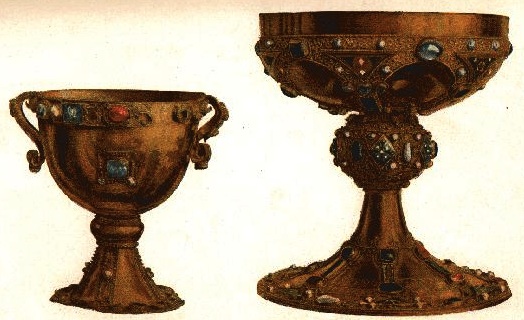 There they go again.
It seems that the recent Arizona Republic news feature about Bishop Thomas J. Olmsted's decision to require priests in his diocese to stop offering consecrated wine to the laity during most Masses stirred up so much debate that the newspaper decided to produce a sequel.
There they go again.
It seems that the recent Arizona Republic news feature about Bishop Thomas J. Olmsted's decision to require priests in his diocese to stop offering consecrated wine to the laity during most Masses stirred up so much debate that the newspaper decided to produce a sequel.
Alas, this story ran under the headline:
Phoenix Diocese wine-less Mass criticized
Phoenix Diocese's new policy sparks online chatter
No, no, no, no, no.
This is one of those classic cases in which it helps to know that reporters do not get to write the headlines that run with their stories.
The Mass is not going to be "wine-less." The issue is whether it will be normal for priests to serve the consecrated wine to members of the congregation.
Meanwhile, the lede this time around said:
The Phoenix Diocese decision to restrict wine in Communion rituals received criticism nationwide on Friday.
The decision received only criticism? Really? I doubt that is the case.
So what's up here? Veteran observers of Catholic worship wars will quickly be able to figure out what is going on by noting some of the names and identities of the critics of the bishop's move and those of the few defenders who are quoted.
Clearly, what we have here is a clash between two schools of liturgists and, unless I am mistaken, this is yet another skirmish related to the "Spirit of Vatican II" camp's opposition to the pro-Vatican camp's support of the new, and some say old-fashioned, English translation of the Roman Missal (and the General Instruction of the Roman Missal that goes with it).
It appears that the critics of the new materials from the Vatican (symbolized by this change in the common American practice of almost always serving parishioners consecrated wine as well as bread) have reacted strongly to this bishop's action and have – logically – provided Arizona Republic staff with links to quite a few national level critics and authorities to back their case (plus views available online in blogs).
Meanwhile, it appears that the bishop and his local supporters have chosen to remain silent. The Arizona Republic, thus, has no bridge to the many, many national and global level voices who would defend this action.
The result? Readers get coverage suggesting that this is a battle between a strange local bishop and the rest of Catholic America. This often happens when Catholic leaders choose to be silent. Unless the reporter and his or her editors have a solid file of numbers from across the spectrum, the resulting story automatically tilts totally toward the critics. This is not always the reporter's fault.
I did find it interesting that this second story on the issue talks about widespread Internet fallout, yet does not mention some of the excellent information in the comments section for the first GetReligion post on this topic. A mere glance at materials from our readers would have revealed some solid information and hints and places to gain pro-Vatican perspectives (here's another good source for some balance).
Meanwhile, this whole conflict reminds me of a joke often told by Catholics who become ensnared in post-Vatican II worship wars. It goes like this.
Question: What's the difference between a terrorist and a liturgist?
Answer: You can negotiate with a terrorist.
Meanwhile, Phoenix readers, help we watch for Mass confusion 3.0.
